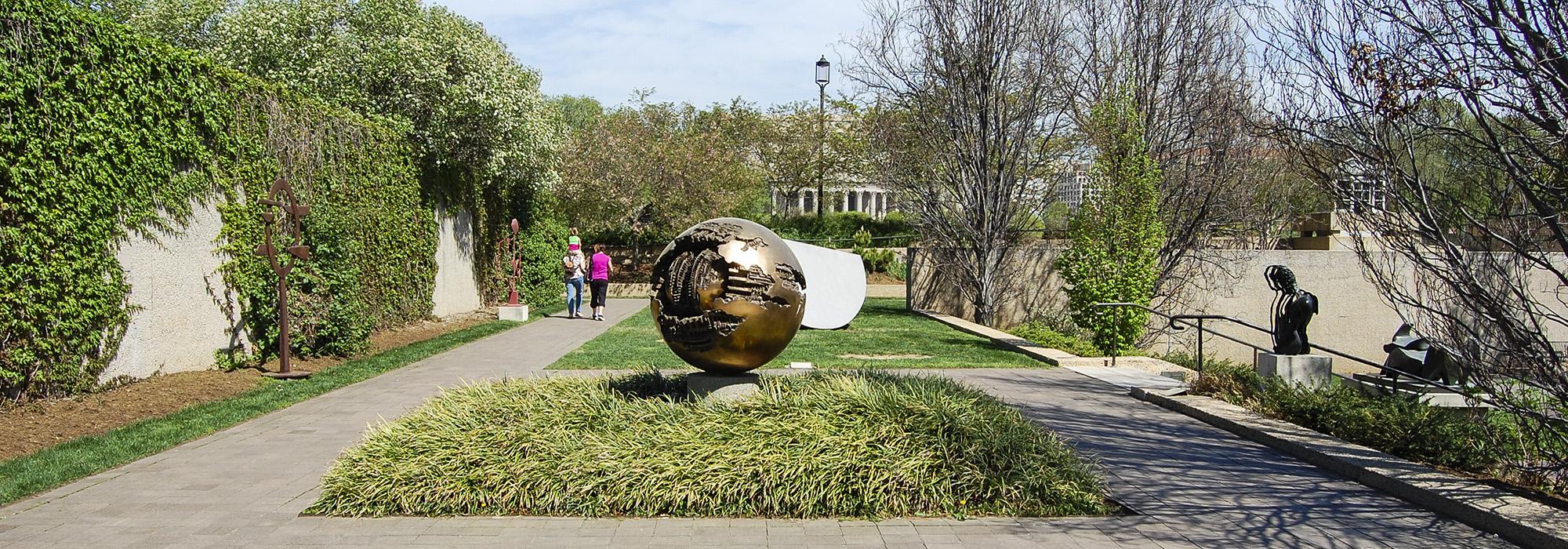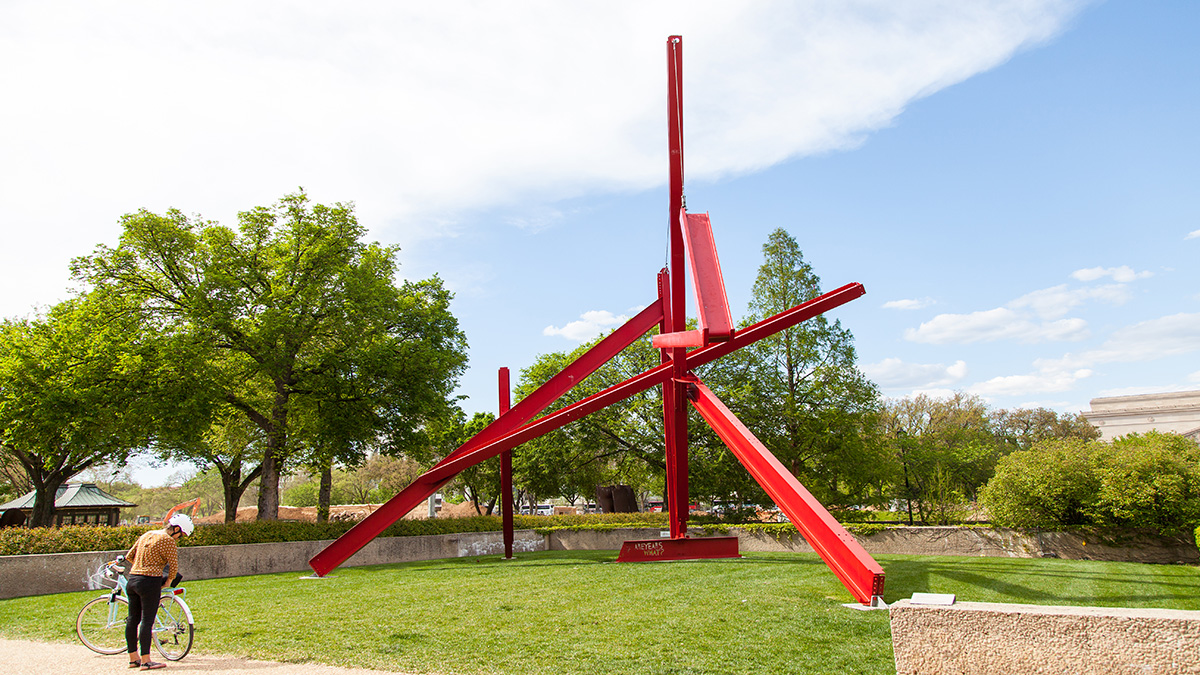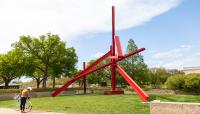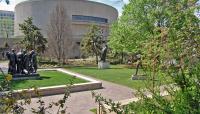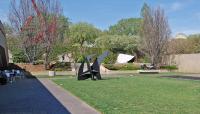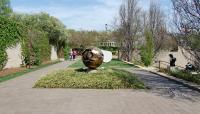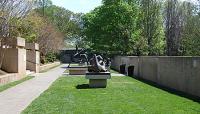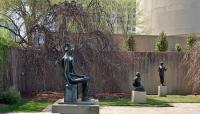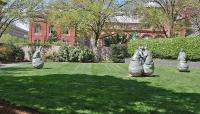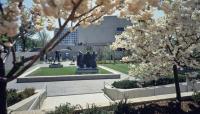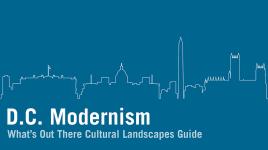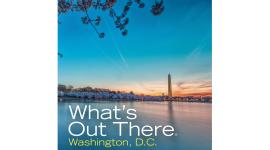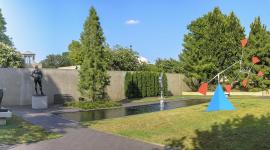Landscape Information
In 1967 Gordon Bunshaft of Skidmore, Owings & Merrill was commissioned to design a museum of contemporary art and a sculpture garden on the National Mall. Early designs for the garden featured a sunken landscape that spanned the full width of the Mall, with a large reflecting pool at its center. Concerns about interrupting the long vista of the Mall halted construction, and an alternate plan by Bunshaft was adopted. When the 1.5-acre garden was opened to the public in 1974, the sparsely planted, Modernist landscape proved an inhospitable environment in the hot Washington summers, and its tiered design presented difficulties for the elderly and the physically challenged. Landscape architect Lester Collins was therefore commissioned to redesign the garden in 1977.
Working within the existing footprint of the garden, Collins transformed the austere, rectangular landscape into a shaded, choreographed journey. Separated from the museum by Jefferson Drive, the sunken sculpture garden is accessible from the south by lateral stairs, while two symmetrical ramps flanking a central stair give access from the Mall side. Bordered by spreading English yew, screened from the Mall by cherry trees, and fitted with bronze handrails, the textured-concrete ramps overlooking the garden allow all visitors an initial glimpse of the reflective pool before pivoting to descend into the space. The walkways, made of grey brick and irregular flagstones, encourage users to circumambulate the sculptures, which are set upon precast shelves against generous swathes of lawn. Bunshaft’s reflecting pool was kept, while a concrete retaining wall forms the backdrop for the lower level, which is accessible by a ramp to the east and a stair to the west—both encased within angled concrete fins. Collins chose trees that were heavily sculptural in form, including Babylon weeping willows, copper beeches, weeping beeches, Japanese black pines, and dawn redwood trees. The sculpture garden is a contributing feature to the National Mall Historic District and it has been determined eligible for listing in the National Register of Historic Places with a period of significance of 1974/1981.



